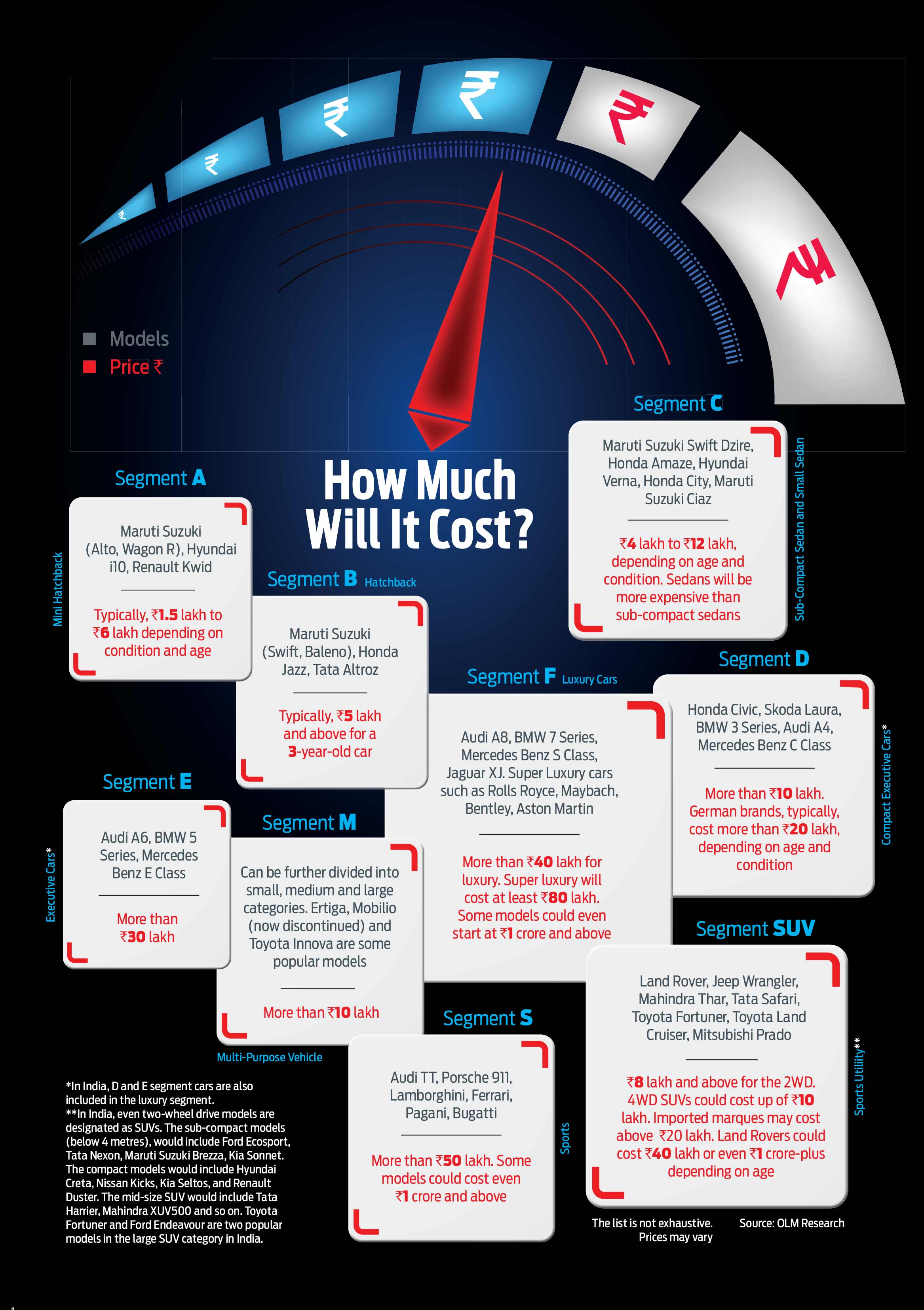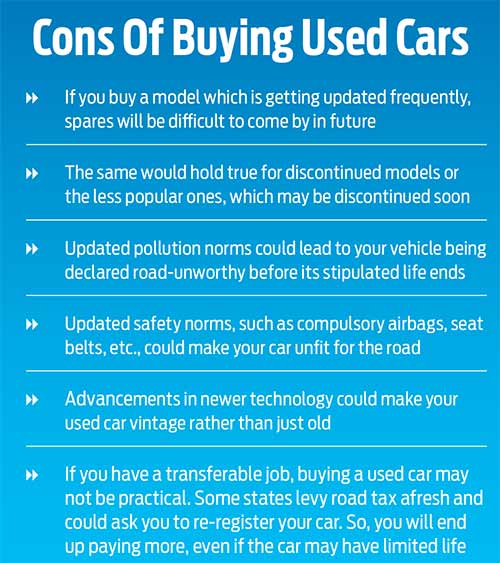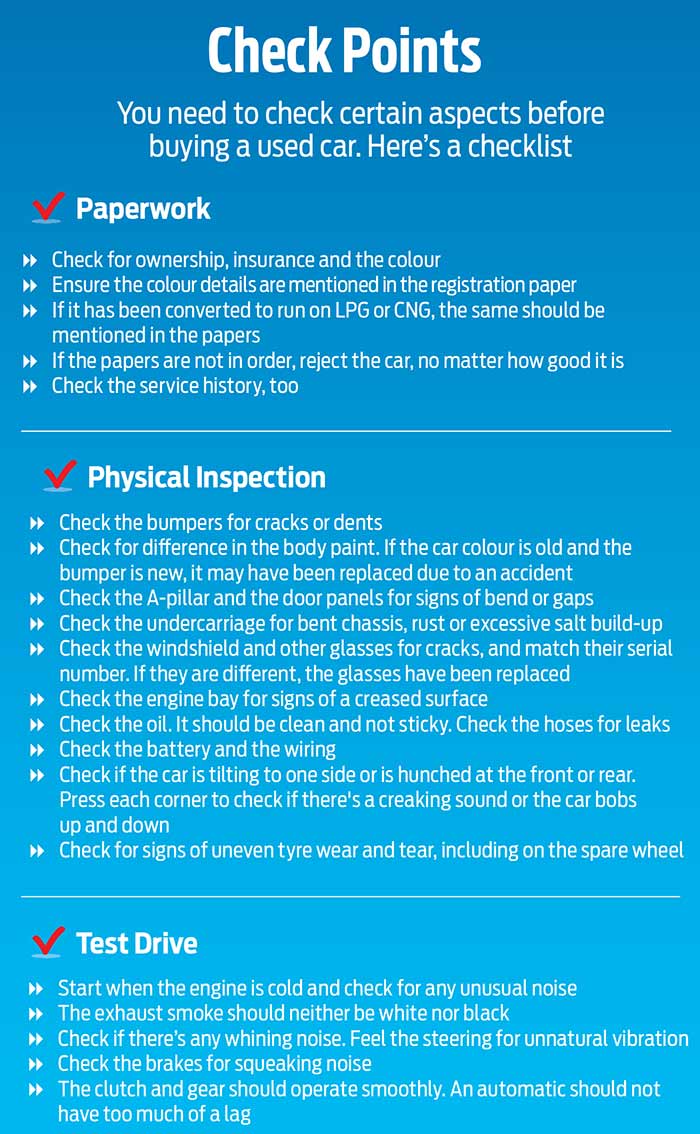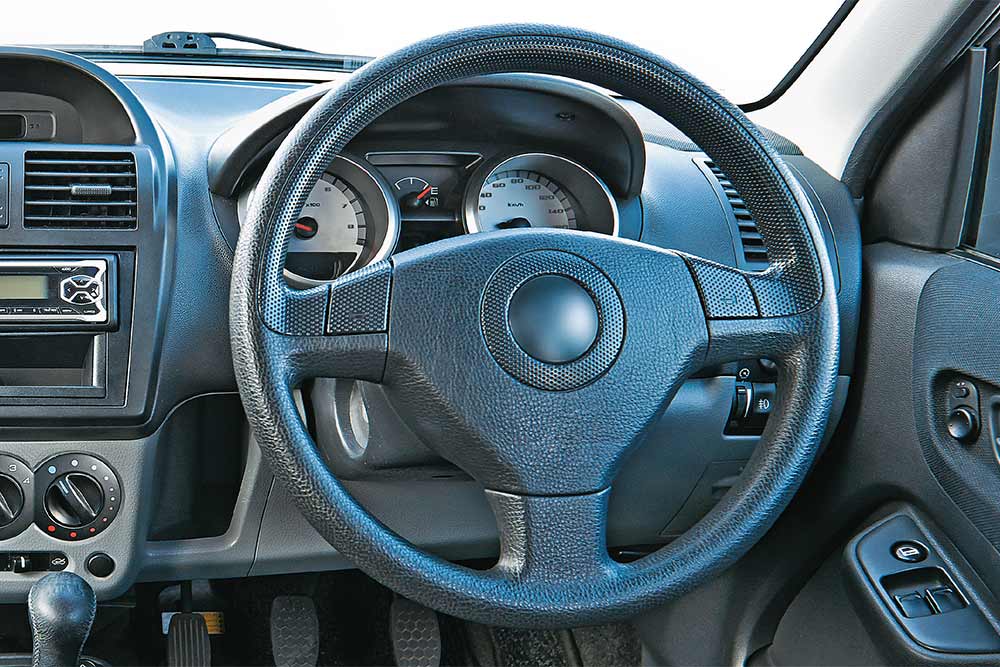When Faridabad-based Raman Sharma, 49, an IT professional, was posted at a remote location in Uttarakhand in 2011 for a wide area network (WAN) project, he decided to buy a used car for his daily needs there. “We had bought a new Honda City a year before my posting. My wife started using that car when I shifted location. For the initial few days, I somehow managed, but because of the remote location, treacherous terrain, and inclement weather, I decided to buy a used car." Raman sold off the car after his three-year stint got over.
In India, used cars are primarily bought for servicing certain needs, including temporary usage like in the case of Raman, or to learn to drive, or, as the family’s second or third car. For most people, small vehicles suffice for these needs. But, nowadays, many first-time buyers in the luxury segment also prefer a used car. The word on the street is that states adjoining Delhi are teeming with used cars, especially luxury models. Diesel vehicles over 10 years old and petrol vehicles over 15 years old are not allowed to ply in the national capital region (NCR).
Says Balbir Singh Dhillon, head of Audi India: “Buyers are typically first-time luxury car owners, young professionals, and young couples, but many families also buy pre-owned cars as the second or third family car.”
Adds Shashank Srivastava, senior executive officer, marketing and sales, Maruti Suzuki India Ltd., “Nowadays, we have seen a trend that customers are preferring quality used cars in the premium hatchback or entry-level sedan segment over new entry-level cars as their first car.”
Perhaps, for a person living in Delhi NCR, it may not make much sense to buy a used car unless it’s for a short period, but there are certain benefits that tip the scales in favour of used cars for people living in other cities. We give a lowdown on why buying a used car would make sense for some of you, and how to go about it.
Lower Costs
Upfront Cost: A used car costs much less than a brand new car of the same make. “Overall, the cost difference could be 20-50 per cent or even more,” says Suraj Ghosh, director, mobility, S&P Global.
For example, a new Maruti Suzuki Swift Petrol VXi AMT (automatic transmission) costs Rs 8.75 lakh on-road in Mumbai; the same model bought in 2018 that has clocked around 11,698 kilometres costs Rs 6.35 lakh ex-Mumbai at Carwale, a platform for buying and selling used cars.
A manual transmission car will cost even less, as will a car that’s older. A 2010 Maruti Suzuki Swift VXi (manual transmission) that has clocked 50,715 kilometres costs Rs 2.65 lakh at Carwale.
However, arriving at the cost of a used car based on its age and the number of kilometres it has run would be superficial. According to Ghosh, there are several other factors that influence and decide the price of a used car, including its physical condition and the number of prior owners.
Research well to ensure you don’t end up with a piece of junk (see Check Points).
Cost of Spares: These days, specific spare parts from original equipment manufacturers (OEM) are mated to the respective car models. These are usually expensive. Also, with every facelift for a model that manufacturers go for, they bring in new spare parts.

For instance, the second-generation Maruti Suzuki Swift that was launched in 2010 and the existing third-generation model launched in 2017 are quite different from each other. The last facelift included many cosmetic changes, such as a more aggressive and butch European-style front grille, matching angular headlights, and a higher beltline on the rear bumper.
Such new spares are usually available at only company dealerships initially. Usually, spares in the open market cost much less compared to dealerships, but in this case they may not be available.
Upkeep Cost: Since most second-hand cars are bought with temporary usage in mind, the upkeep is not always the top priority. Usually, people have this understanding that the moment a used car starts throwing a tantrum, it’s time to send it to the scrapyard.
For example, though the open market may have fakes or second-hand parts, not everyone is particular about that when it comes to a used car as long as the spares serve the purpose Similarly, you may not bother about the kind of fuel you will use in your used car, and likely go for the cheapest one.
Insurance Cost: It is usually advisable to go for comprehensive coverage for a new car. Says Animesh Das, chief underwriting officer, Acko General Insurance: “A comprehensive cover will protect you against any unforeseen events like major damage or theft of the car.”
With an old car you might opt for just the cheapest third-party insurance, which is mandatory by law.
Says Das, “The average insurance cost for a brand-new Alto is around Rs 15,000 for a three-year, third-party and one-year own-damage bundled plan. The approximate third-party insurance cost for a 10-year-old Maruti Alto would be Rs 2,094. For a five-year-old car of the same make, it would be around Rs 2,900.”
Service Cost: Usually, people prefer taking a new car only to the company-authorised service stations; that again may not be the case for used cars. With a very old used car, you would possibly settle for even a roadside workshop. And when the car requires servicing too frequently, say every month or three months, people send the car to the scrapyard.

Other Benefits
Resale Value: A new car depreciates in value as soon as it is taken out of the showroom, but a used vehicle hardly depreciates because it is already a depreciated product. This means that its resale value is not drastically different from its original price.
Debarshi Das, 44, a project consultant in Jamshedpur, in fact, made a profit on his used car. His first car was a 10-year-old Maruti Suzuki 800 that he bought for a princely sum of Rs 25,000 in the early 2000s. He sold it after five years for a little over Rs 29,000, making a profit of Rs 4,000, along with getting valuable hands-on experience in driving, maintenance and other aspects.
While Debarshi's case may be an exception, typically, an old car will not depreciate as much as a new car.
Multi-tasking: You will have the freedom to treat your used car the way you want. For instance, Debarshi never bothered about the bumps and scrapes that his car accumulated on his project site. “I have used my car as a workhorse. I took it to my project sites in Odisha, West Bengal, Jharkhand and Chhattisgarh, which had no roads. I have used my car as my workstation, meeting room, dinner table, and sleeping dormitory, too, because project sites hardly have any proper facilities. I also honed my off-roading skills on dirt tracks, which I would have never done with a new car,” he says.
Lastly, many automobile companies offer reward points when you shift to a new car of the same model.
Where To Buy It From?
You can buy a used car from the open market or from company-owned dealerships for pre-owned cars. Typically, the open market offers a better price, but there could be major transparency issues which an untrained eye is likely to miss.
It is here that company-owned outlets, such as Maruti True Value, Mahindra First Choice, and Audi Approved Plus, come in. These dealerships offer a warranty as well as after-sales support. Audi, for instance, offers a two-year warranty with unlimited kilometre mileage.
Maruti Suzuki, on the other hand, provides three free services and a maximum warranty period of up to one year or 15,000 km from the date of sale of certified (True Value) category vehicles, which covers mechanical and electrical faults with only exclusions of wear and tear of parts like glass and rubber.
Most importantly, the buyer can be assured of the genuineness of the car. Says Dhillon: “Buying a pre-owned car from Audi Approved Plus means that the customer will get a pre-owned car that has undergone mechanical, bodywork, interior and electrical inspections at 300-plus multi-point checks and thorough multiple-level quality checks along with a full on-road test.”
Maruti Suzuki True Value, for instance, buys cars after running them across 376 checkpoints during the evaluation process. “These checkpoints are designed in a way that every important aspect of the car is covered, and a comprehensive report is generated. If there is any accidental damage, body damage, paint job, pillar job, or any other damage, and performance-related issue, then the customer will be informed by our dealer,” adds Srivastava.
In addition, these pre-owned dealerships offer a complete vehicle history at the time of purchase. Audi claims it doesn’t sell any accidental or flood-damaged vehicles. Says Dhillon: “We verify the service history of each vehicle before it is bought by the dealership.”
These are things that you can, however, never vouch for in the open market. You can land up with a car with severe mechanical or body flaws or accidental or flood damage.
But what happens if you are in a city where such dealerships don’t exist? You might possibly take a friend along who knows a bit or two about cars or request a mechanic to tag along for basic inspection. Says Raman: “I hardly knew much about the nitty-gritties of automobiles, so I took one of my colleagues and our driver to inspect the Hyundai Santro Xing I planned to buy. It was about five years old and had hardly clocked 30,000 km.”

How Should You Choose?
Model: There are several options to choose from—the A, B, C, D, E, and the SUV and MPV segments. But there are a few pointers you should keep in mind.
According to Ghosh, besides the brand value and cost, buyers should also consider the accessibility and availability of service centres and spares, and the phase in the model’s life cycle (in or out of production). Typically, one should avoid less popular models that have not had many successful runs, as their spares will be difficult to come by.
Both Raman and Debarshi, despite having the need to travel extensively, bought small cars of popular models for two reasons—the remoteness of their location and the easy availability of spares. Usually, people prefer smaller cars for inter-city usage. Says Srivastava: “Hatchbacks are still the most popular pre-owned cars. Baleno, Swift and Wagon-R are the popular choices.”
Talking of usage, if you are planning to buy a car for seniors, make sure it has a tall stance with a low footboard to allow for easy ingress and egress. So, luxury cars with a low stance that requires bending to enter and exit, or SUVs where one has to step up and climb in, should be best avoided.
Price: The price of a used car depends on many factors, such as the kilometres run, its condition and age. Says Dhillon: “The cost varies from product to product. Our pre-owned car range begins at approximately Rs 20 lakh and goes up to Rs 1 crore.”
Typically, cars in the SUV, M and sports segments will not come cheap in the used car market. The reason is that these are typically newer models. For instance, a 2021 Tata Harrier at Cars24 will cost Rs 17.80 lakh, and a 2021 Tata Nexon will cost Rs 11.89 lakh. A slightly older version, a 2019-make Tata Nexon, will cost Rs 7.82 lakh.
Used cars have plenty of character. The adventures you will undertake and the driving skills you will acquire with your old car will leave you with a bank of fond memories and stories to tell your friends, children, and grand children in your twilight years.
S.Sanyal@outlookindia.com

